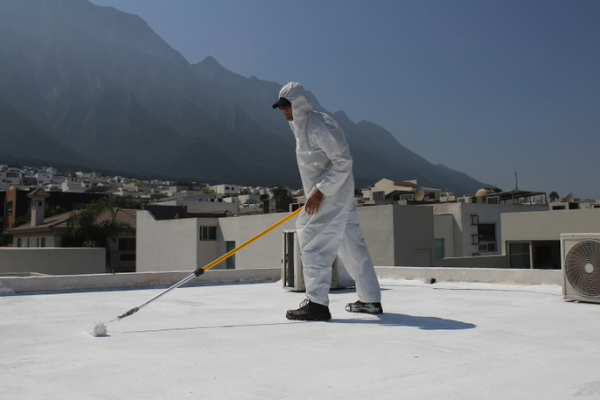Choosing the Right Low Slope Roof Coating Options and Application Techniques
Your knowledge of low-slope roof coating options and proper application techniques can set you apart from competitors. When you offer guidance on how to choose and install fluid-applied coatings like silicone low-slope roof coatings, your customers will benefit and be more inclined to stay loyal to your business for future roof repair projects.
The most popular roof coating types are silicone, acrylic and polyurethane. While each has unique properties and applications, all provide great value to your commercial customers, in the form of improved roofing system functions, a marked reduction in energy bills and decreased need for costly repairs down the road.
Helping customers choose the best low-slope roof coating options for their business is just the beginning — knowing the proper application techniques is crucial. With this combined knowledge, you'll be able to deliver high-quality results and grow your business.

Applying roof coatings
Most types of roof coating application techniques follow a similar pattern (with some variances). The basic steps include:
- Install roof coatings during optimal weather conditions (not too humid or rainy).
- Inspect the roof area for any damage and make repairs as needed.
- Use the right tools, including a paintbrush, pressure hose, cleaning solution and paint roller.
- Thoroughly clean the roof surface and let it dry before starting the application process.
- Follow the manufacturer's instructions regarding the use of a primer.
- Coat any cracks, broken seams or edges first.
- Using a paint roller or brush, spread the coating, and focus on working one area of the roof (typically, 6 to 8 feet at a time).
- Apply two thin coats where necessary instead of a single thick layer of coating. Apply the second coating only after the first is completely cured.
Knowing how to match the right coating to the roof surface makes all the difference. Customers will see how the proper coating enhances durability, increases energy efficiency and creates a long-lasting seal for their commercial properties.
Application tips for acrylic coatings
Acrylic roof coatings add flexibility to top surfaces and offer outstanding reflectivity and energy savings. Elastomeric coatings such as ROOF X TENDER 500 are highly elastic, an ideal feature if the building undergoes frequent expansion or contraction.
Typically, water-based acrylic coatings require two coats at 1.5 gallons per square foot. If issues arise, consider upgrading to ROOF X TENDER 700, which provides up to three times the coverage. Other acrylic coating application tips include:
- Avoid application during adverse weather conditions, such as excessive heat or frigid temperatures.
- Apply silicone sealant to leaks in roof seams prior to coating installation.
- Apply coating with the use of a roller, sprayer, brush or squeegee.
Note that acrylic coatings are not the optimum choice for low-slope roofs situated in the shade and/or roofs with inadequate drainage.
Application tips for silicone coatings
Unlike acrylic coatings, silicone is effective in all types of weather. But, as with acrylic, it's best not to install silicone coating if a roof is wet. Additionally:
- Ensure the roof surface is ready for application.
- Spray or brush additional coating over seams.
- Work from a single corner down the edge to the opposite corner, then follow a similar configuration in reverse. (And always have an "exit strategy" after completing installation.)
You can apply silicone coating to a variety of surfaces, from metal and concrete to modified bitumen, TPO, and most PVC roofs.
Application tips for polyurethane coatings
Solvent-based polyurethane roof coatings are often considered the low-cost coating of choice in areas of high snowfall or excessive heat and humidity. As an impact-resistant coating, it's also ideal for roofs with a high degree of foot traffic. Follow these application tips:
- When employing a brush or airless spray roller, follow the manufacturer's instructions for proper coating thickness.
- Rollers and brushes are particularly helpful in small roof areas.
- Multiple coatings may be necessary to guarantee adequate protection.
- Drying and curing take time, usually 24 to 48 hours.
Because polyurethane coatings can emit a noxious odor, roofing contractors often ask business owners to suspend operations during the installation process.
To meet your customers' expectations (and to attract new customers to your business), leverage your knowledge and experience to recommend the right low-slope roof coating option for a commercial structure. Customers will see the enhanced longevity and effectiveness of the roof coating, and keep you in mind for future projects and upgrades.
We offer a comprehensive range of roof coatings for virtually any low-slope roof project. Using the right materials, combined with your roofing expertise, is the best strategy for long-term customer satisfaction.